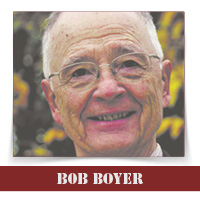
By: Bob Boyer
The above headline refers to a historical cloak and dagger thriller in the September, 2017 issue of “Smithsonian” magazine. The theme of this issue is “Secrets of American History,” and this spy story fits perfectly. I recommend reading the entire article. Here is a sample.
Chick Parsons, the spy, was ideally suited for his role of connecting Filipinos and Americans during World War Two. His mother sent him from the U.S. in 1905, when he was five years old, to live with his uncle, an official with the American colonial government in Manila. Chick attended elementary school at a private Catholic school, Santa Potenciana. Classes were in Spanish, the language of the elite. It must have been a bit of a shock for the young American, but the sink-or-swim treatment worked. Chick became fluent in Spanish and adept in picking up languages. His classmates accepted him as one of their own by dubbing him with his nickname, a nearly universal Filipino tradition.
Chick returned to the U.S. for high school, but he apparently missed Manila. He joined the merchant marine in 1920 and returned to the Philippines where he was assigned as stenographer to General Leonard Wood, the current Governor General. He accompanied Wood in Manila and in his travels around the country, which is when he learned Tagalog and probably bits of other dialects. Peter Eisner, the author of this adventure, notes that Chick made numerous contacts beyond the “colonial elites” and subsequently established himself in the export business, married a young émigré from Austria, and settled down in his “adoptive country,” while maintaining his U.S. connection. He joined the Navy reserves and was commissioned a junior officer. When the Japanese entered Manila on January 2, 1942, Eisner assumed the disguise of a Panamanian diplomat. Panama had earlier named him an “honorary consul general.” He and his family remained in occupied Manila.
Chip gathered information about the Japanese forces and made contact with Filipino guerrillas. His undercover career nearly came to an early end when he was imprisoned in Fort Santiago for five days by the Japanese, but Chick maintained his disguise despite interrogation and probably torture. Still thinking he was a Panamanian diplomat the Japanese allowed him and his family to leave the country. They made their way to the U.S. (smuggling out “documents they had gathered in a diaper bag”). When MacArthur, who had known him in Manila, heard that Chip had resurfaced, he immediately ordered that he be sent to his headquarters in Brisbane, Australia. MacArthur desperately needed to establish contact with the “tens of thousands of Filipino and American guerrillas.”
By February of 1943, Chick was on a submarine to Mindanao, on the first of three secret, highly productive missions. He became MacArthur’s liaison with the guerrillas. It was on this first trip that, according to Eisner, Chick made a personal, “unofficial” visit of some duration to Manila, disguised as a Catholic priest, probably (but unsuccessfully) to find his mother-in-law.
When MacArthur’s staff questioned him about his whereabouts, he claimed that he had tried to contact them but couldn’t get through. He was not punished. He had spent months island hopping throughout the country, gathering huge amounts of information and delivering crucial radio equipment and other supplies to the guerrillas, and encouraging them with news of the coming invasion.
Chick returned a second time, later in 1942, on a similar mission of supply and connect. Then in early 1944 he went in again, this time to help prepare the way for the invasion of Leyte. He was with the guerrillas to greet the Sixth Army, under General Kreuger, when the Americans landed on the Leyte beaches south of Tacloban on Oct. 20. MacArthur arrived with the third wave of the landing, wading ashore to make his famous “I have returned” speech. This was a pretty nervy move, since, as Eisner points out, the huge and furious naval battle of nearby Leyte Gulf didn’t begin in full force until Oct. 23 and lasted for three days. Had the Japanese won, MacArthur and the Sixth Army would have been in danger. Still, the Sixth Army had the guerrillas with them, delivered by Chip. Eisner, by the way, refers to a couple of little-known books about Chip, as well as a 1950 movie, which I plan to look into.
Contact Bob Boyer at Robert.boyer@snc.edu or <anamericaninmanila. com>.
 VIA Times – September 2017 Issue Vital News, Vibrant VIews for Asian Americans in Chicago & Midwest
VIA Times – September 2017 Issue Vital News, Vibrant VIews for Asian Americans in Chicago & Midwest

